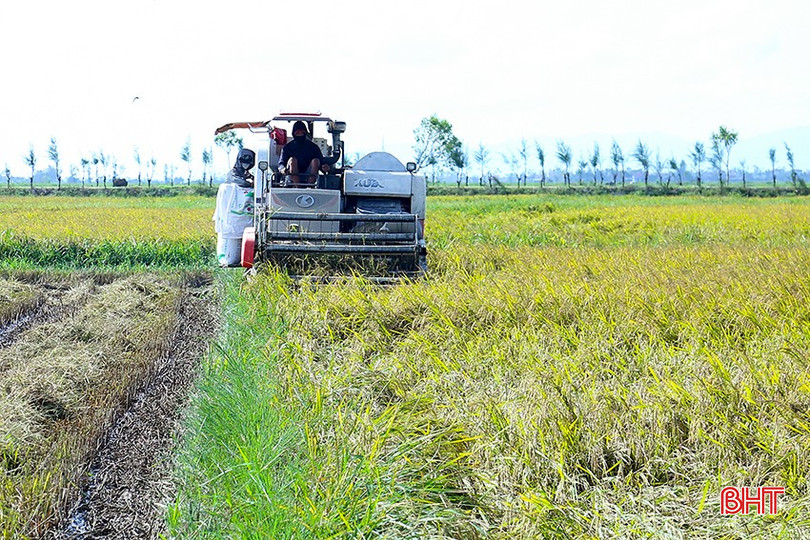
In recent years, climate change has become increasingly evident, causing many negative consequences for agricultural production as well as people's lives. Faced with this challenge, the Government has encouraged localities to promote the application of rice cultivation measures towards reducing emissions, both saving water and contributing to reducing greenhouse gases, towards sustainable agriculture, adapting to climate.
In particular, the Ministry of Agriculture and Rural Development (now the Ministry of Agriculture and Environment) issued Decision No. 1693/QD-BNN-KHCN approving the plan to reduce greenhouse gas emissions (including methane) in the agricultural sector by 2030, with a vision to 2050.
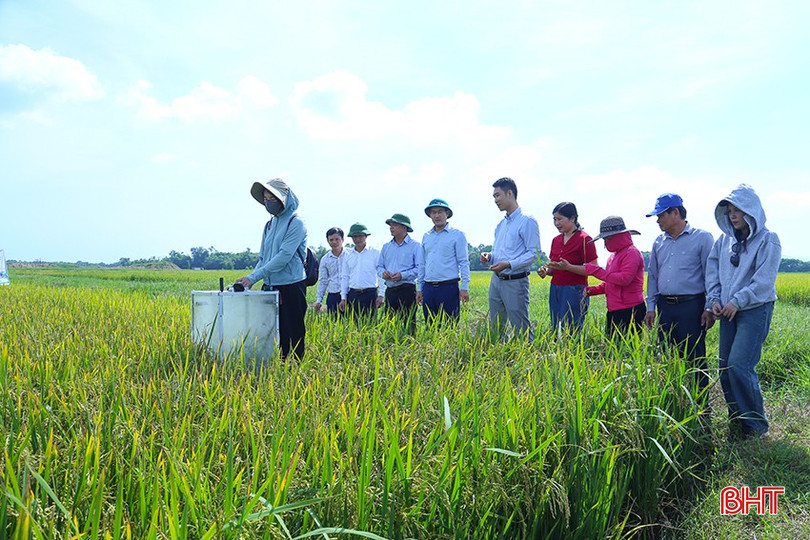
In Ha Tinh, based on the province's orientation for sustainable agricultural development and climate change adaptation, the North Central Agricultural Science and Technology Institute in collaboration with Green Carbon Inc (Japan) has piloted the project "Application of alternate wetting and drying (AWD) technology in rice cultivation adapting to climate change".
The project will be implemented within 10 years from 2025 to 2035. Accordingly, in the spring crop of 2025, the project will start with an area of 50.7 hectares with 163 participating households in the old Nam Phuc Thang commune; the summer-autumn crop will be expanded to an area of 250 hectares with 750 participating households in Thien Cam commune.
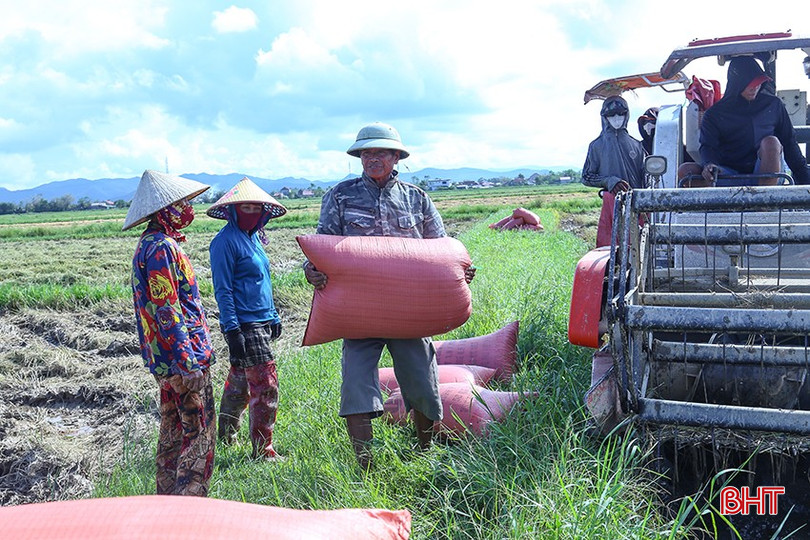
Mr. Nguyen Van Huong (Hung Loc village, Thien Cam commune) said: “Experts and technical staff have directly guided and transferred the process of implementing alternating flood and dry irrigation and synchronous, effective water management in the fields to farmers. In the summer-autumn crop, I have nearly 1 hectare participating in the project. During the implementation process, the project fields had to be watered 2-3 times less than traditional fields, but the rice plants were found to be more resistant to lodging and had reduced pests and diseases, contributing to reducing production costs while maintaining stable productivity.”
According to a report by the North Central Institute of Agricultural Science and Technology, after two pilot crops, the results showed that the water-saving irrigation model has significantly reduced the amount of water used while the rice plants still grow and develop well, produce many tillers and are more resistant to storms. The average yield of the spring crop reached 72.5 quintals/ha, an increase of 6.15% compared to the regularly flooded rice fields; the summer-autumn crop reached about 45 - 50 quintals/ha. In particular, the amount of methane (CH4) emissions decreased by 70.48% compared to traditional farming methods.
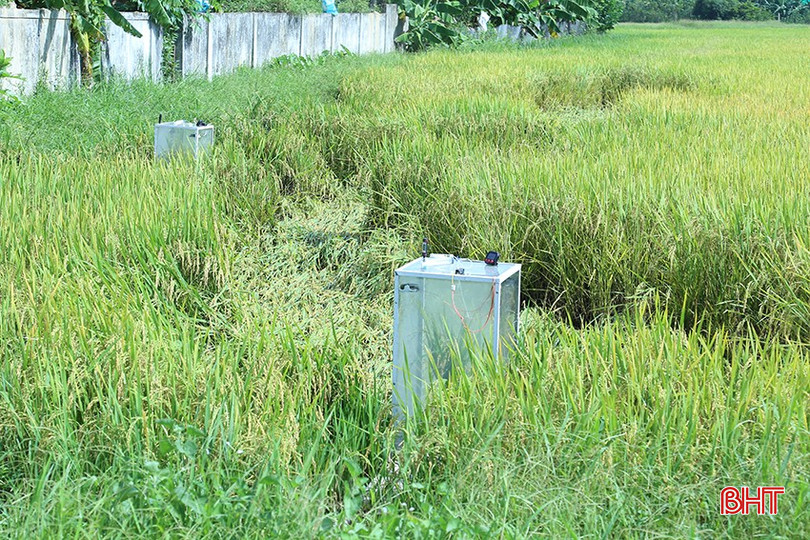
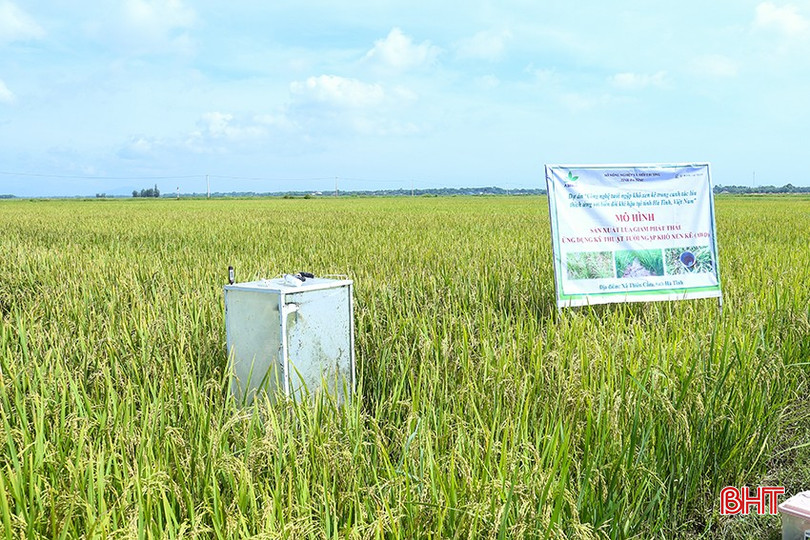
On the local government side, Mr. Hoang Kim Tuy - Head of the Economic Department (People's Committee of Thien Cam commune) assessed: "Thien Cam is a leading commune in land consolidation with a total rice area of nearly 1,200 hectares.
The alternating flooding and drying technology is very suitable because most of the area is irrigated by pumping stations. This solution helps save and reduce water pressure, especially in the summer-autumn crop. In 2026, we plan to expand the applied area to 500 hectares. However, to encourage farmers to participate sustainably, the project needs to have specific directions on the conversion roadmap as well as a mechanism for selling carbon credits to create additional income for people."
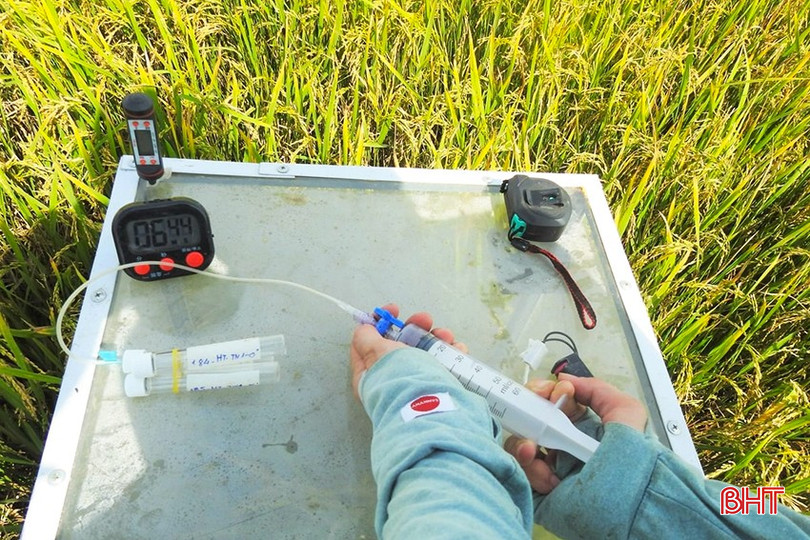
According to scientific studies, rice cultivation consumes the majority of irrigation water in agriculture, 34-43%, and significantly emits greenhouse gases, especially CH4. This is a disadvantage in the context of severe climate change and increasingly severe water scarcity. Moreover, rice is said to contribute up to 48% of greenhouse gas emissions, of which 75% is CH4 emitted in agriculture. CH4 is also produced in large quantities in conditions where rice is flooded and lacks oxygen.
In that context, water management by alternating wet and dry irrigation is considered an effective measure to limit the formation and emission of CH4 gas. Many domestic and foreign studies have also demonstrated that AWD significantly reduces the amount of water used while maintaining productivity, significantly reducing CH4 emissions.
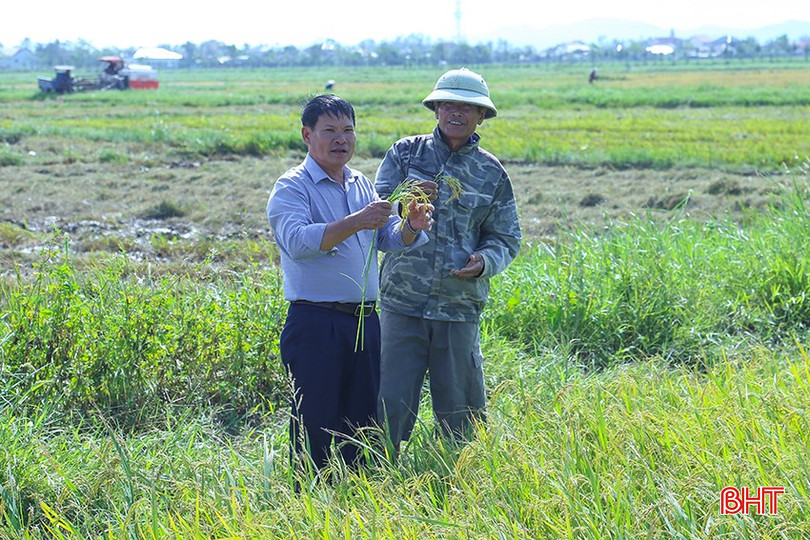
Mr. Nguyen Thanh Hai - Deputy Director of the Department of Agriculture and Environment of Ha Tinh said: "The application of alternating flooding and drying irrigation technology is not only suitable for farmers' farming practices but also well adapted to production conditions in Ha Tinh. This is a solution that brings dual benefits, both saving water resources, reducing greenhouse gas emissions, and maintaining and improving rice productivity. In the coming time, the department will coordinate with relevant units to continue implementing and expanding the area applying this irrigation technique in the coming time. At the same time, the industry will focus on building a specific roadmap associated with each locality and each production area to ensure feasibility and long-term effectiveness. Thereby, contributing to realizing the goal of developing sustainable, environmentally friendly agriculture in the province".
The model of alternating flooding and drying in Ha Tinh has initially brought about efficiency in productivity, costs and the environment. This is a suitable direction in the context of increasingly extreme climate change, and at the same time opens up new opportunities for farmers when participating in the carbon credit market in the future.
Source: https://baohatinh.vn/cong-nghe-tuoi-ngap-kho-xen-ke-trong-canh-tac-lua-giam-phat-thai-post295008.html


![[Photo] General Secretary To Lam, Secretary of the Central Military Commission attends the 12th Party Congress of the Army](https://vphoto.vietnam.vn/thumb/1200x675/vietnam/resource/IMAGE/2025/9/30/9b63aaa37ddb472ead84e3870a8ae825)
![[Photo] Panorama of the cable-stayed bridge, the final bottleneck of the Ben Luc-Long Thanh expressway](https://vphoto.vietnam.vn/thumb/1200x675/vietnam/resource/IMAGE/2025/9/30/391fdf21025541d6b2f092e49a17243f)
![[Photo] President Luong Cuong receives President of the Cuban National Assembly Esteban Lazo Hernandez](https://vphoto.vietnam.vn/thumb/1200x675/vietnam/resource/IMAGE/2025/9/30/4d38932911c24f6ea1936252bd5427fa)
![[Photo] The 1st Congress of Phu Tho Provincial Party Committee, term 2025-2030](https://vphoto.vietnam.vn/thumb/1200x675/vietnam/resource/IMAGE/2025/9/30/1507da06216649bba8a1ce6251816820)

![[Photo] Solemn opening of the 12th Military Party Congress for the 2025-2030 term](https://vphoto.vietnam.vn/thumb/1200x675/vietnam/resource/IMAGE/2025/9/30/2cd383b3130d41a1a4b5ace0d5eb989d)



































































































Comment (0)